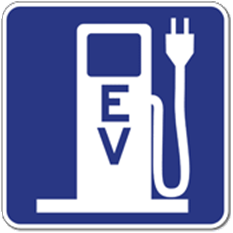Introductory text filler
Bridge Place
Bridge places serve as both a routing destination and/or a landmark in the map. Use only to represent a named bridge with local or navigational significance.

Geometry
The area of the bridge place should generally be limited to the area of the bridge span(s) and, for multi-span bridges, care should be taken not to cover any significant open area between spans. This prevents the area place layer from covering a significant portion of other map layers in the app.
Address
If an active road bridge, use the name of the segments crossing the bridge. Non-road bridges that are destinations should have their address set like any other destination. If a non-road bridge is added purely as a landmark and / or would not be navigated to (e.g., active railroad bridge), do not add a street or HN in the address category.
When a bridge crosses two or more city names within a state:
- If the segments share a common street (primary or alt), select that street name and check the None box for City
- If the segments do not share a common street (primary or alt), do not add a street or HN.
If a bridges crosses state or country borders, select the state that encompasses a majority of the bridge or consider mapping two area places in their respective state and/or country.
Name
This should be an official or locally-used name, preferably signed at each approach. Do not map unnamed bridges signed only for the feature they cross. Bridge areas may also be used to add a signed or known commemorative name that is different than a bridge name which is used in the street name.
Categories
In addition to bridge, add any categories relevant to the bridge as a destination. These may include categories such as Tourist Attraction/Historic Site, Scenic Lookout/Viewpoint, Park, etc. Do not add additional categories to bridges that serve only as a landmark.
Entry Points
| As of April 2021, Multiple Entry Points are only used in the iOS (Apple) version of the Waze app, and not used by the Android app. When adding entry points, keep in mind that production Android users are routed only to the originally created entry point. |
Entry points should according to the navigation needs of the bridge place:
- As a destination
- If a bridge has (a) parking area(s) for pedestrian access near the approach for the bridge, they should be set as an entry points and named accordingly.
- If a bridge does not have pedestrian access but has a nearby lot designated for viewing, the entry point should be set to that lot.
- As a routing aid (e.g., add a stop)
- For single span with an undivded road, a single entry point that allows a route to come from either direction should be added. If the bridge already has a destination point near the approach to one or both sides of the bridge, this point does not need to be added.
- For a single span with divided roads or multi-span bridges, an entry point should be added at the entrance of the bridge from each direction to allow routing from the selected direction.
Lock
Completed bridge places should be locked to at least 2, though regional guidance may suggest a higher level based on road type, landmark importance, etc.
Bridge Segments
Name
Given their height above ground level, bridges are subject to the parallax in imagery. This causes the bridge to appear offset, curved, and/or wavy in WME imagery compared to its actual position. Segments should be adjusted to compensate for this shift, using the GPS points layer or acceptable sources to align the segment to its real-world location.
Name
Elevation
Segment elevation should be set to regional elevation guidance
Examples
Meridian Br next to modern US-81 bridge Walkway Over the Hudson Pedestrian Entry Points Starrucca Viaduct - Railroad bridge viewing from nearby park only